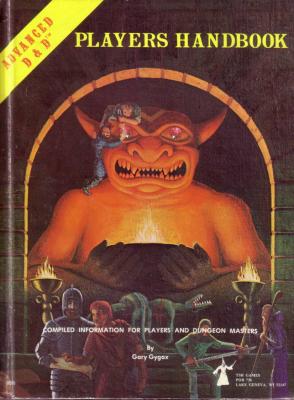Many newer Dungeon Masters would say that the ideal job of the DM is to ensure that the players move along in the plot in a fun and friendly manner. Even the 4th edition Dungeon Masters Guides developed by Wizards of the Coast encourage their DMs to further the goals of the party. The DMG (Dungeon Masters Guide) says, "the DMs goal is to make success taste its sweetest by presenting challenges that are just hard enough that the other players have to work to overcome them, but not s hard that they leave all the characters dead." (Dungeon Masters Guide, pg. 4) But while I do believe that the party should survive, there are times when a total party kill (TPK) can be useful.
I am an old-skool D&D player. I started playing D&D in 1984 when I was just two years old. I used to roll my father's dice for him. I actually remember some of the games. The DM would sit at a separate table with his screens up and the players would sit around the larger table in chairs and lounging on the couch. They played first edition D&D. I still have my dad's books.

When I was nine years old, my dad taught me to play D&D properly. While second edition was available, he only had first edition books, so I learned on those. I entered my first game as a player. My dad wouldn't teach me unless I got a friend to play with me, so I grabbed my friend Rob, who still plays D&D with me today.
I learned how to play on first edition but I spent the majority of my D&D gaming career learning second edition and third edition. I'll save my opinions on third edition for another post, but wow! what a change.
I have to admit, I love fourth edition. It is in my opinion the best version of D&D to ever be released. It is more rules based than previous editions, but it makes things a lot easier and it adds a sense of creativity that previous editions lacked.
I have digressed a bit from my main point. That point is, what the purpose of the DM is. Since I herald from an old skool mentality, I believe that the DM is the bane of the party. The party is the enemy of the dungeon master. It is the duty of the DM to inflict as much pain and suffering as possible on the party. The preference isn't to kill the party. This is because the DM wants to prolong the suffering of the players as long as possible.
Penny Arcade did an amazing comic that sums up the values of an old-skool DM.

(Apparently the image gets cut off by my blog setup...just click on the image for the full version. it's awesome.)
To this end, I have devised a fourth edition encounter that has a large potential for a TPK (total party kill). If the party is highly skilled in
endurance then this isn't the best way to slaughter those uppity players. However, if you have several
controllers and caster oriented
strikers then this is the ideal way to put the players in their place.
Here are the monsters that you need:
- Mummy Guardian x2 - Monster Manual, page 192
- Brain In A Jar x2 - Open Grave, page 140
- Crawling Claw Swarm x3 - Open Grave, page 142
This is ideal for a party at levels 7-9. I put together the above encounter for level 8. It creates an xp of 1725, which is 25xp below what is recommended for level 8. However, it is the combo of monsters that creates the death trap.
How does it work? It's very simple. The swarms of crawling claws focus the party on the immediate threat. They get free attacks on any player in their aura and they are resistant to all damage that isn't an AOE (area of effect). Use the
Brain in a Jar to dominate the tank and the healer, which will allow the mummies to inflict as much Mummy Rot as they can on the rest of the party. If your party includes a lot of casters, this will easily cause the mummy rot disease to kill them. If it has melee oriented strikers then at least it will annoy them and weaken them.
Put the brains on a shelf that is elevated and the party will be forced to use ranged combat to get to them. If the party is mostly ranged they will die horribly to the mummy rot. If the party is mostly melee they will be unable to stop the brains from dominating the tank and healer. This gives the claw swarms and the mummies time to beat the melee down.
Overall, this combo is designed to make your players cry. If you prescribe to the old-skool idea that the player is the enemy, this will give you a lot of joy. If you are a newer DM, with fourth edition ideals, then this may not the be the strategy for you...however, I encourage you to try it out and see if the pain etched on your players faces while you maim and murder them gives you any sense of pleasure. If it does, then you are an old-skool DM in training. If it doesn't, then look to future posts from me where I try to find the balance between making the party suffer, and progressing the plot.
Until next time....






